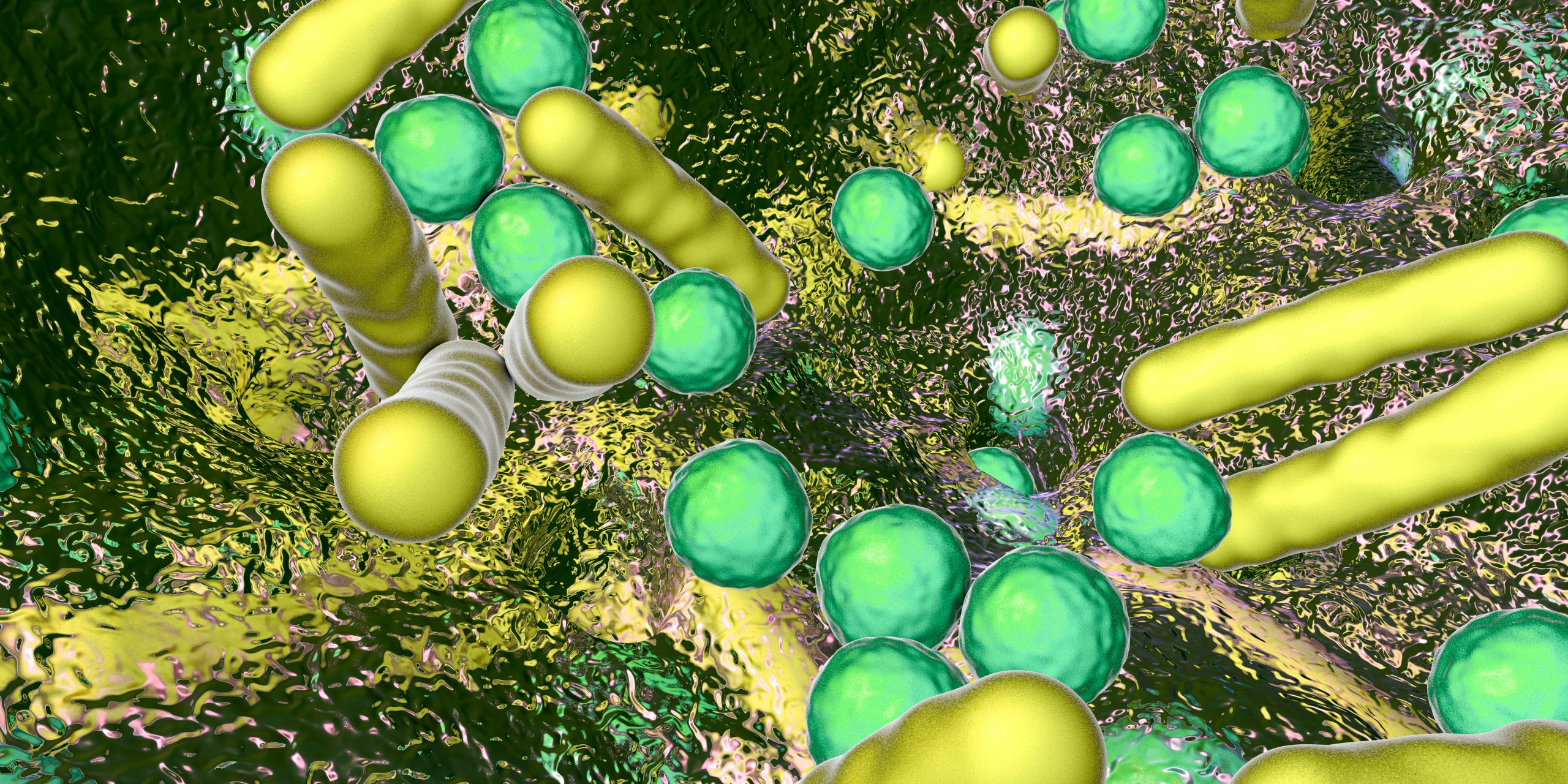
István Zachar and Gergely Boza, researchers of the Institute of Evolution, ELKH Centre for Ecological Research (ÖK) investigated the role of cooperative interactions among microbial cells in the development of higher levels of organisation. They identified the selection forces that facilitate or inhibit microbial community formation, reproduction and the possible emergence of higher levels of selection and evolution. The study of their results has been published in the prestigious international journal Frontiers in Ecology and Evolution.
Microbial communities consist of unicellular organisms, often of species from different domains eukaryotes, bacteria or archaea. Examples are biofilms, the common lifeform of prokaryotes, that form on any surface, on rocks in riverbeds, on the roots of plants, on the skin of animals and humans, or on the inner surface of the digestive system. These communities are usually highly diverse but interactions are mostly limited to the immediate neighbourhood of cells.
One of the most common interactions among microbes and in microbial communities is metabolite-mediated cooperation, whereby cells leak various products into their environment, which can diffuse over small distances. These molecules may serve as food for others or antibiotics, enzymes or signal molecules, that may mediate higher-order interactions between cells, ultimately facilitating or inhibiting the partner’s reproduction.
Metabolic interactions based on mutual assistance and cooperation – such as syntrophy, or cross-feeding – are widespread among microbes and are crucial for the formation, functioning and maintenance of these communities, probably also responsible for the unculturabiolity of many prokaryotes. However, products are usually costly to produce and can easily be diluted or are subject to exploitation by free-riders.
The most effective form of metabolic cooperation between different species is symbiosis, in particular endosymbiosis, where one cell physically relocates into the other. While this is an obvious way of stabilising the mutually beneficial relationships so common among microbes, only one such (presumed) case is known so far. Mitochondria, a crucal eukaryotic acquisition, have evolved to cellular organelles via endosymbiosis, when a bacterium moved into an archaeal host, about 2 billion years ago. Some theories suggest that this highly successful relationship emerged from an already existing mutually beneficial metabolic syntrophy between partners. However, no syntrophic relationship approximating endosymbiosis is known at all among any two modern prokaryotes (unicells lacking a nucleus). The emergence of eukaryotes from prokaryotic ancestors was a major evolutionary transition, during which cells lost their autonomy and created a new evolutionary unit responsible for the macroscopic living world around us. Although syntrophy is extremely widespread in the prokaryotic world, we know of no demonstrable case leading to a major transition, syntrophic, endosymbiotic or other. Why is it that prokaryotes are seemingly not able to “level up”? Why do we not see more major transitions in the prokaryotic domain? Why do we not see a transiton in individuality in microbial biofilms, as it has happened multiple times independently in case of eukaryotic multicellularity?
In their studies, the researchers of ÖK have categorised selection forces according to which ones facilitate and which ones hinder the establishment, reproduction and possible higher organisation of microbial communities. They have taken into account the community characteristics: species composition, coupled metabolism, metabolic functions, community building and interaction patterns. Some of these can be stably maintained in by certain microbial communities, and may also reappear when new communities are formed. If communities can also transmit minor changes, it is capable of informational inheritanceing. If bacterial colonies have such an adaptive property, it may be stably maintained in the population, for example in new colonies that bud off from the parent colony. If this trait provides a selective advantage to the colony, it should be maintained through higher level, e.g. group selection. This would be the first step towards a prokaryotic major transition. However, due to the high variability of bacterial communities (and their composition), the chances of this happening are low, and we do not yet see convincing examples.
An alternative solution, the researchers suggest, is for the loose interaction network to lead to tight pairwise symbiosis through higher levels of selection. A textbook example of this is endosymbiosis, the engulfment of a cell by another cell, which is common in eukaryotes but unknown in the prokaryotic world except for the origin of the mitochondrion. Prokaryotes seem to have been given the opportunity to move to a higher level of organisation only once. It is this fruitful relationship that has led us to read these lines.
Publication:
Zachar, I. and Boza, G. (2022). The Evolution of Microbial Facilitation: Sociogenesis, Symbiogenesis, and Transition in Individuality. Front. Ecol. Evol. 10:798045. doi: 10.3389/fevo.2022.798045
Source: elkh.org


